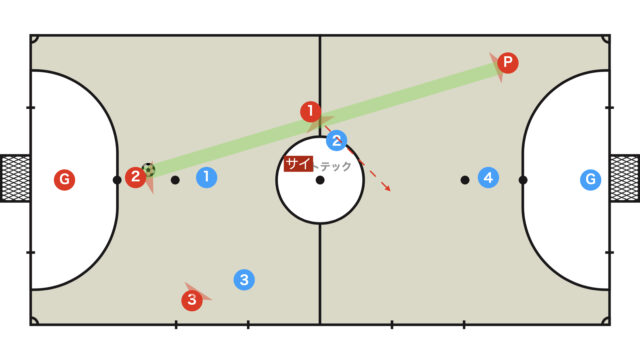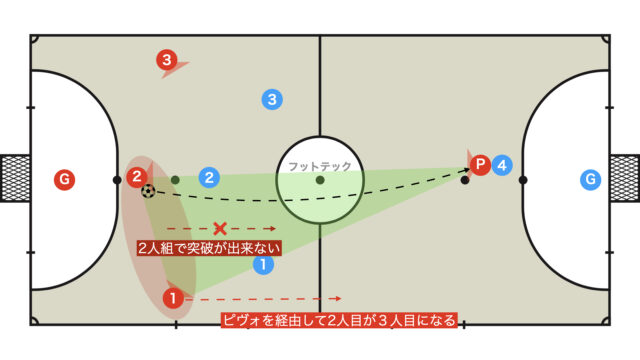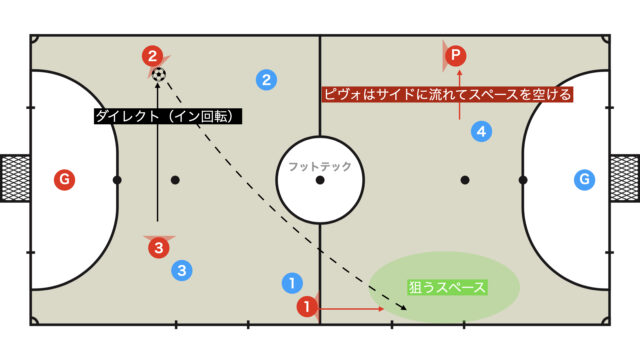When you start to move beyond being a beginner in futsal, you may encounter a tactic known as “3 on line,” where three players line up horizontally.
In reality, it seems that most players only know the form of this tactic without truly understanding its essence.
This article provides an in‐depth explanation of the tactical intent behind the diagonal 3 on line—frequently occurring in quatro with an ala, fixo, and fixo combination—and all conceivable variations of attack.
Tactical Intent of 3 on line
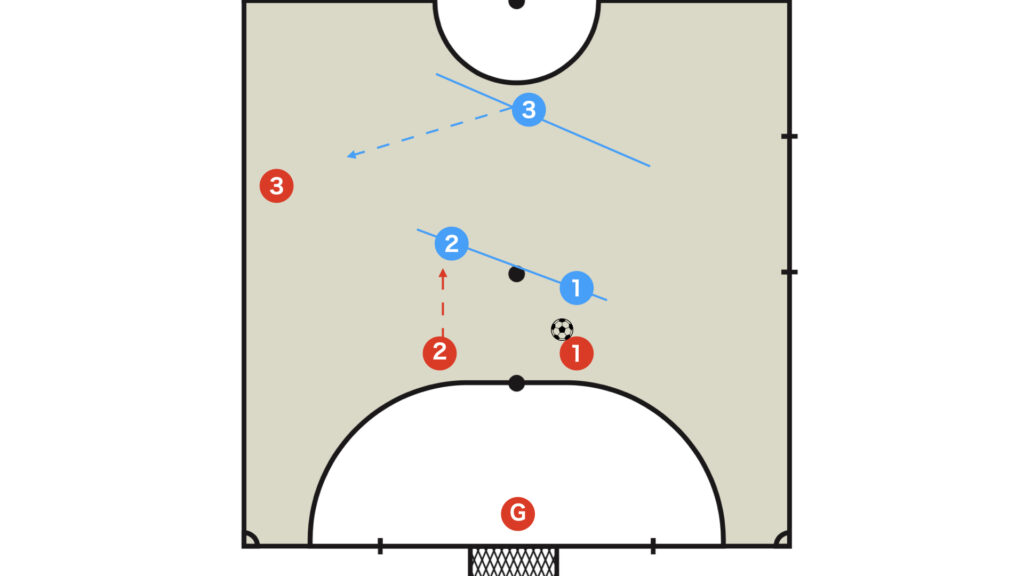
Basically, the defense (DF) attempts to eliminate attacking space by constructing multiple lines as shown in the figure above.
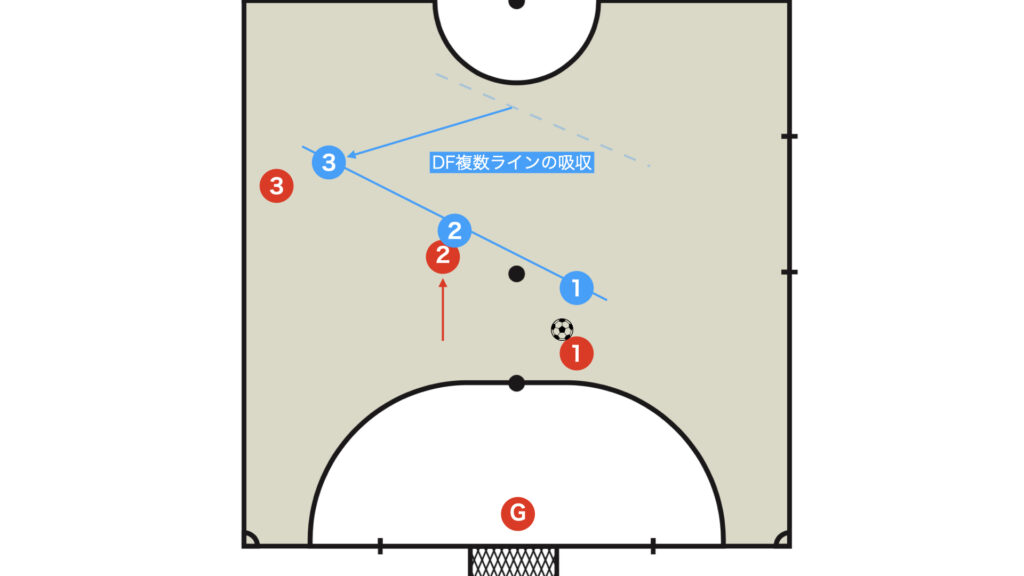
The aim of forming a 3 on line is to force the opposing defense into a horizontal alignment, effectively absorbing what would be two defensive lines into one.
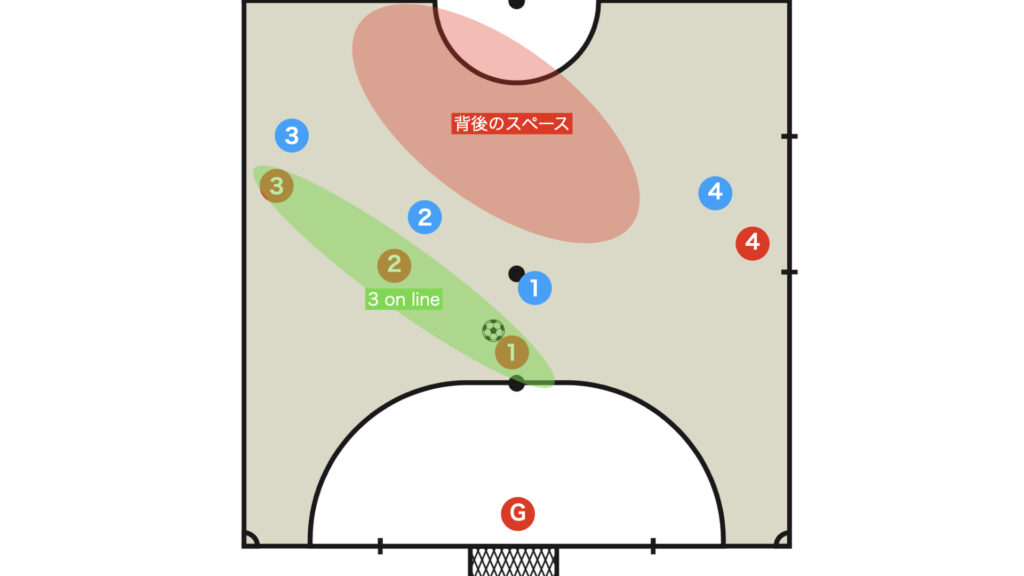
As a result, space is created behind the defense, and the attack aims to make effective use of that space.
There are three types of 3 on line—vertical, diagonal, and horizontal—but this article will explain the diagonal type as an example.
Basically, the essence remains the same regardless of the type.
Two-player Rotation: Switching
Tactical Intent and Effects
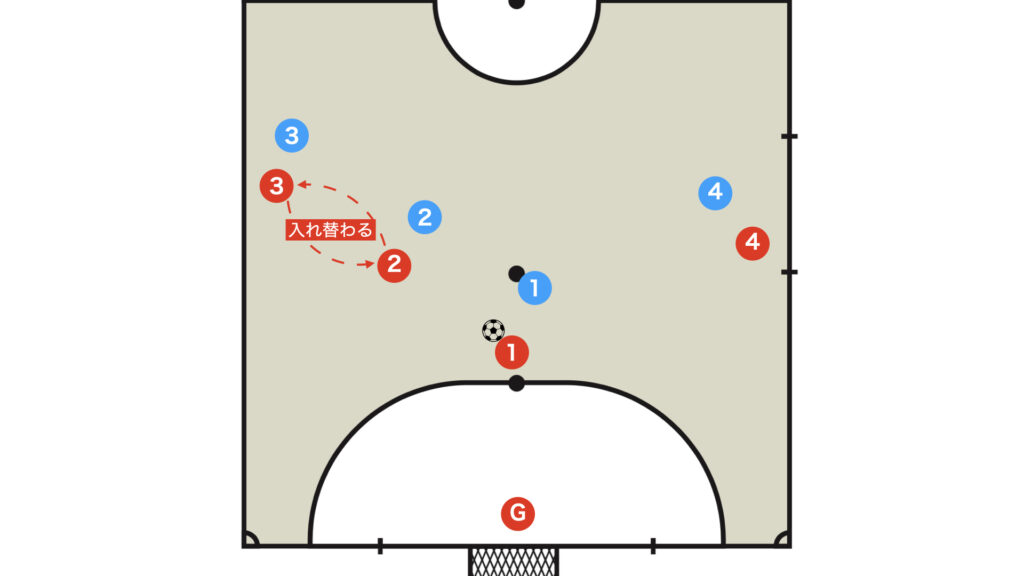
When the two off-ball players switch positions, it produces the following two effects:
- It induces a marker switch, creating a momentary free space.
- By swapping positions, it adjusts the formation to better suit the players’ abilities.
Indirect Curtain
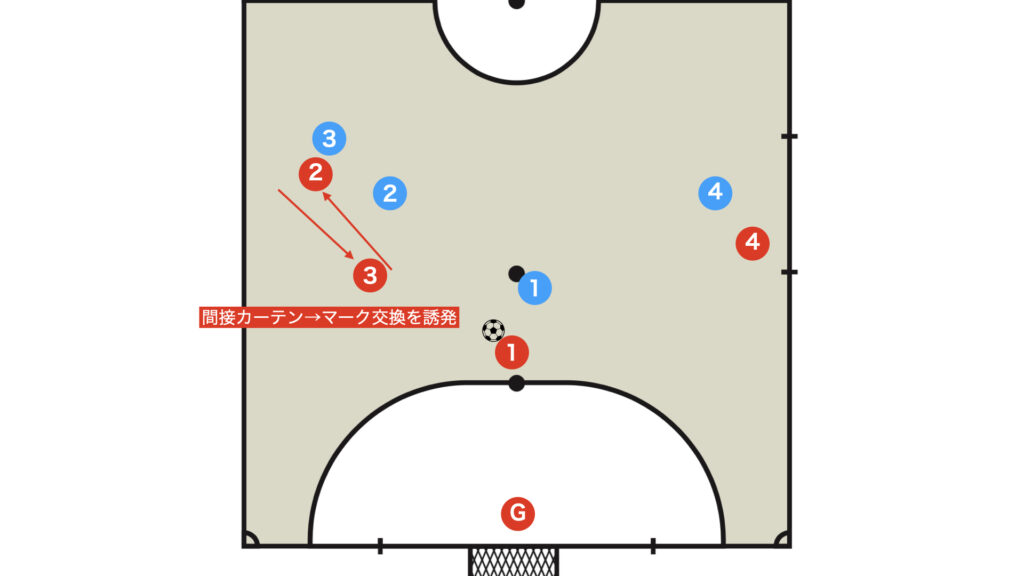
Exploiting the Space Behind the Opponent
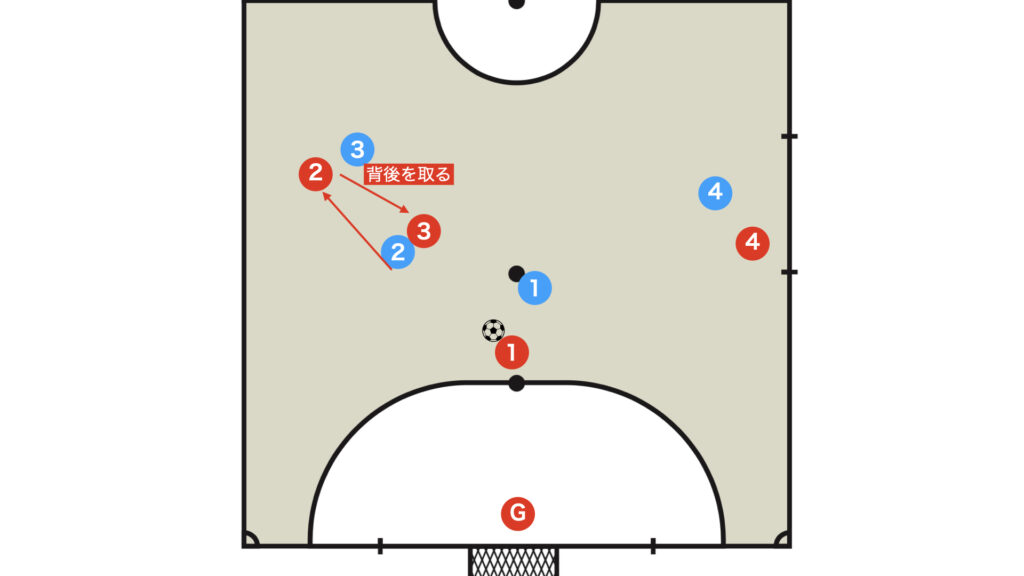
When the opponent switches markers and defends in a zonal manner, it is effective to exploit the space between the lines by making a run behind them.
Duo in the Center Lane (fixo-fixo)
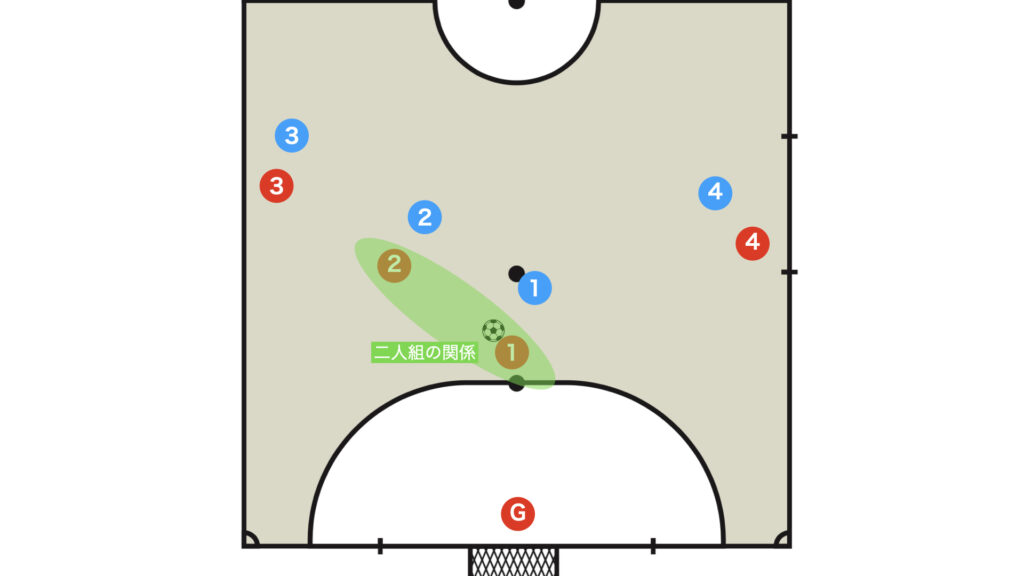
When discussing 3 on line, attention often focuses on the tactic involving the deep player (red number 3); however, the basic principle is to break down the defense with the ball-holder and the two players closest to them.
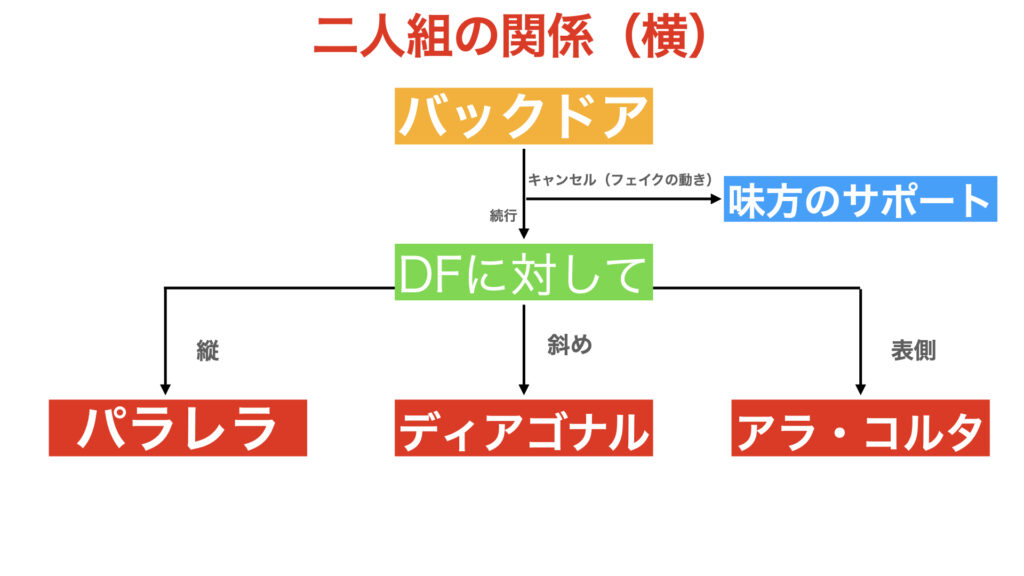
The duo relationship between the two fixo players is no different from the standard duo.
This article will examine each aspect in detail.
Backdoor
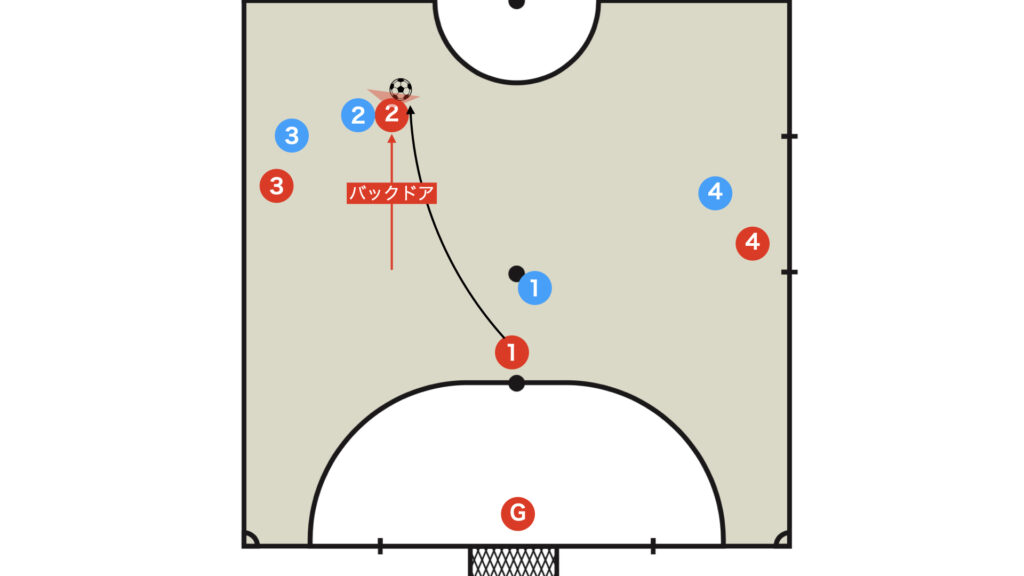
If a clear run behind the defense is available, aim for the backdoor.
Ala Corta
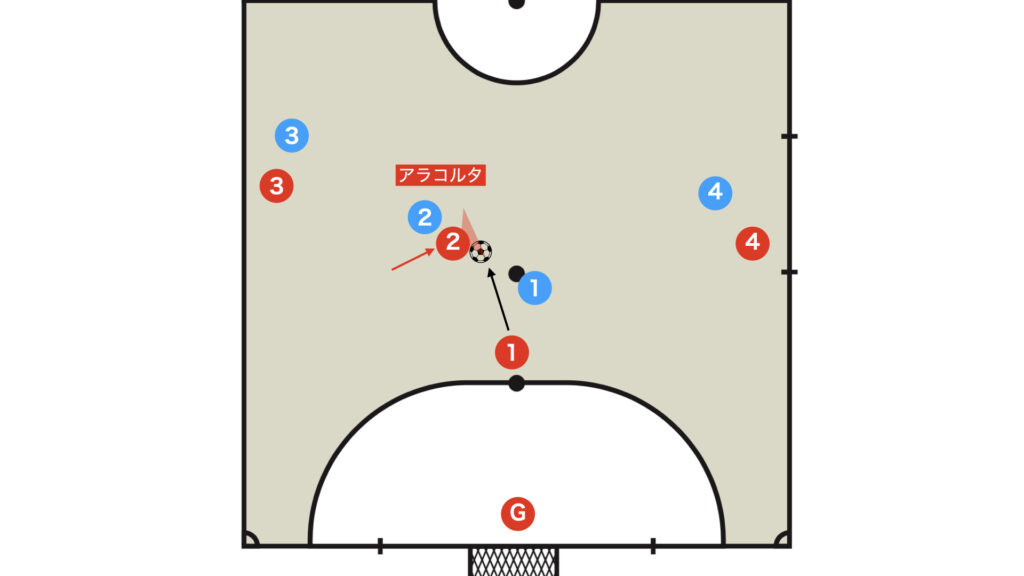
Advancing by isolating an opponent with an Ala Corta increases the difficulty considerably; however, even if the isolation fails, it still establishes a duo with red number 4.
Paralela
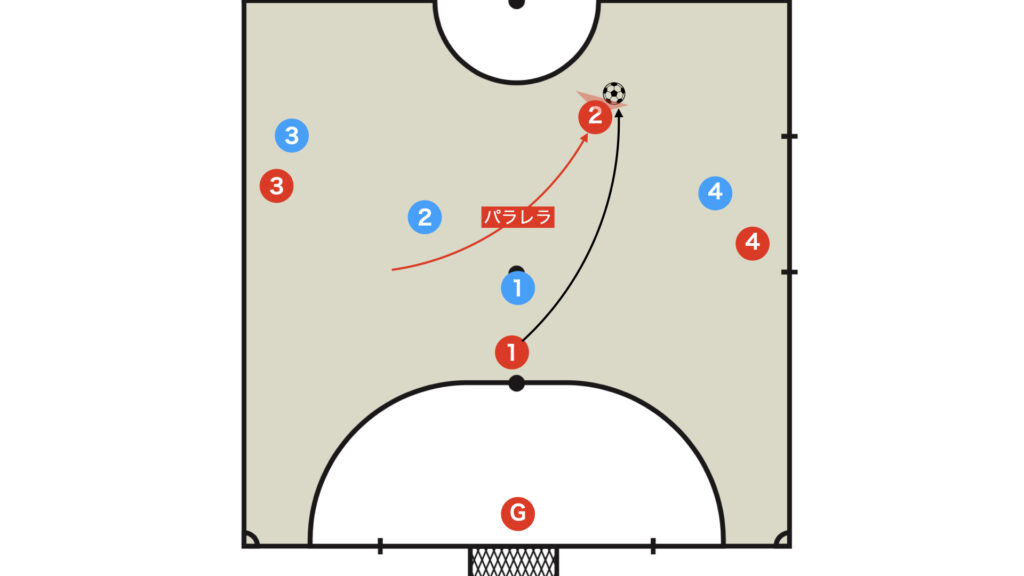
The Paralela in the center lane is referred to as the “central paralela.”
Volante
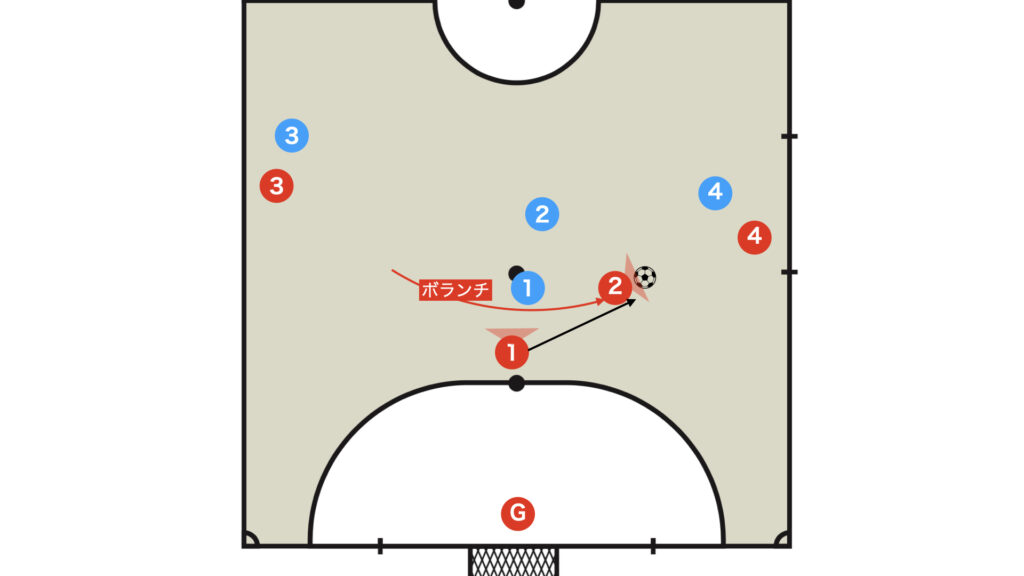
Pass sideways with a similar sense to delivering a Paralela pass.
Although it is an extremely advanced technique, it is employed in the top category when breaking through multiple lines.
As shown in the figure above, there is the advantage of being able to form another 3 on line on the right side.
Diagonal
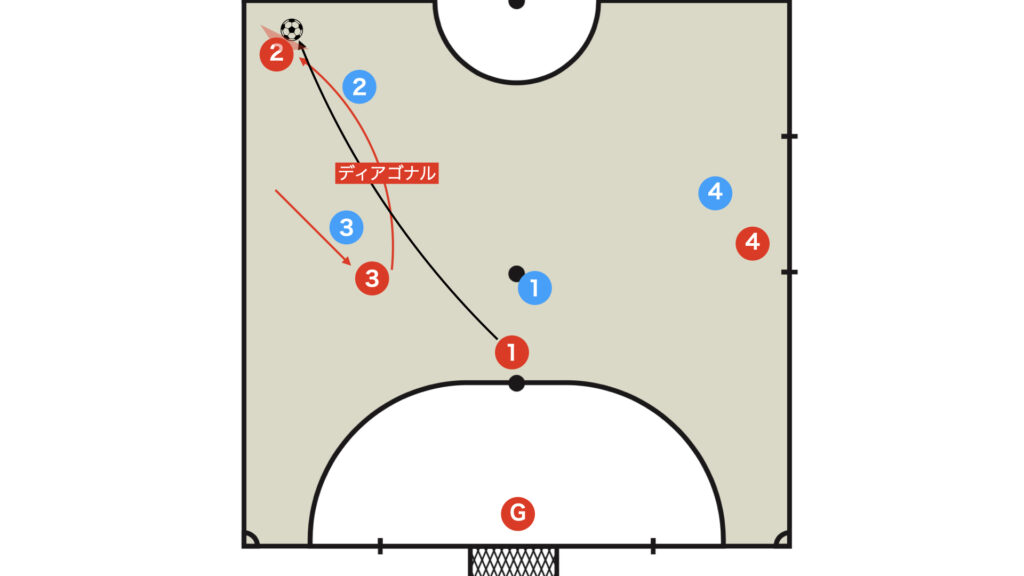
This is a frequently used break in quatro.
If the player in front (red number 2) makes a run with a diagonal, the deep player (red number 3) will drop back to the position originally occupied by red number 2 to recover the floor balance.
One-Two
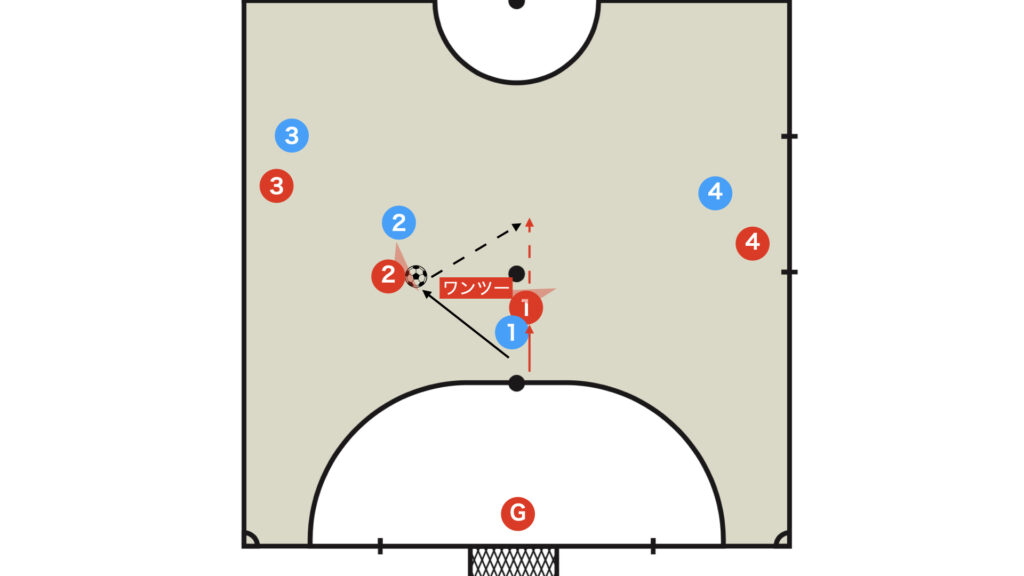
When the ball-holder is under pressure, it is effective for the last fixo to execute a one-two by making a backdoor run.
If a pass from red number 1 to red number 2 is completed, the play is highly likely to succeed.
This type of one-two play between the two fixo players in the center lane, known as the “central one-two,” is the mainstream break in quatro.
Attacks Involving the Third Player
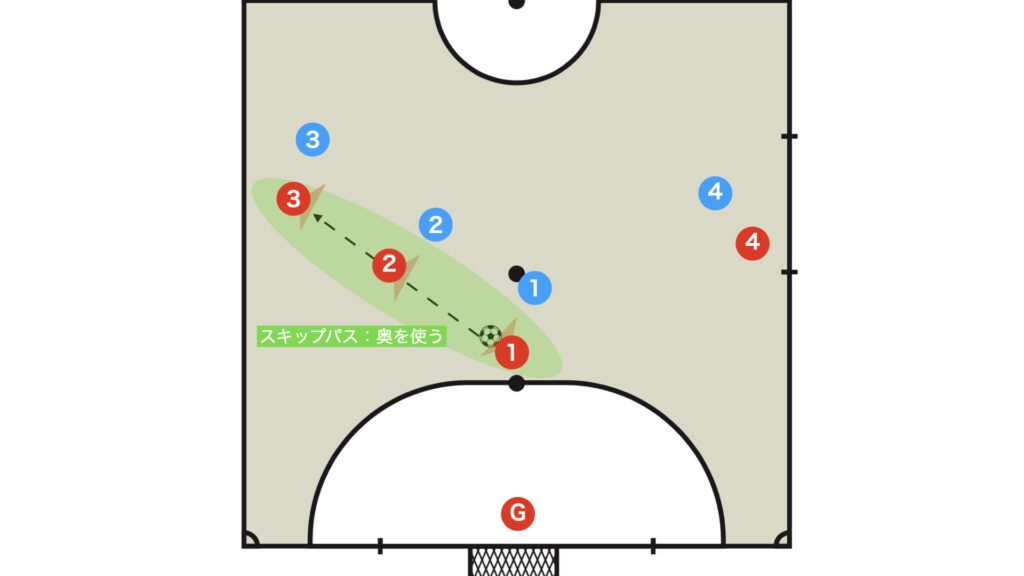
This is the most classic break among the numerous attacking patterns of the 3 on line.
Sai (pivo-ala)
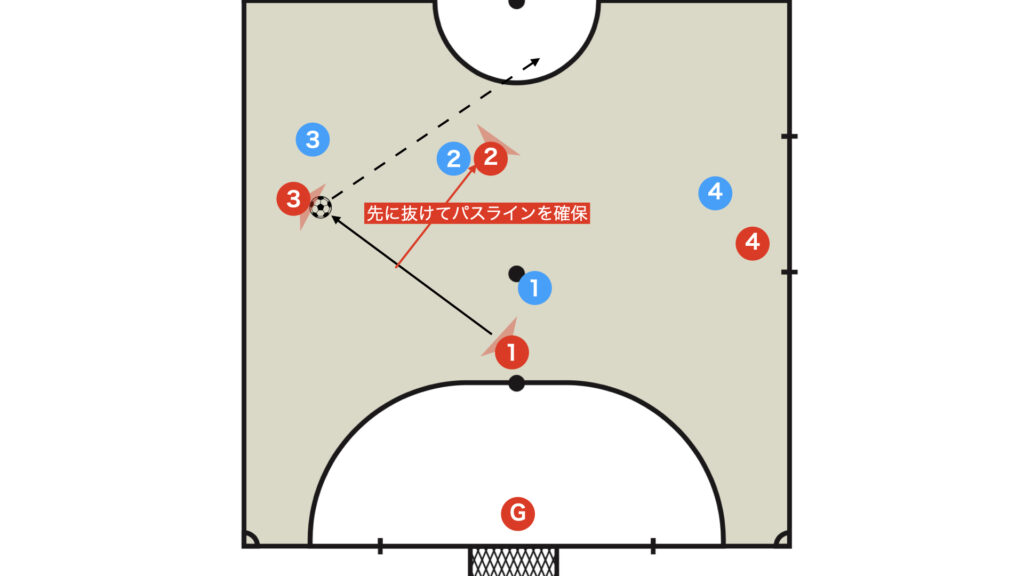
Sai, which means “get out of the way” in Spanish, refers to a tactic where the central player makes a run to secure a long pass lane.
It is also used synonymously with “Limpia” (meaning “to clean”), but in Japan it is predominantly called Sai.
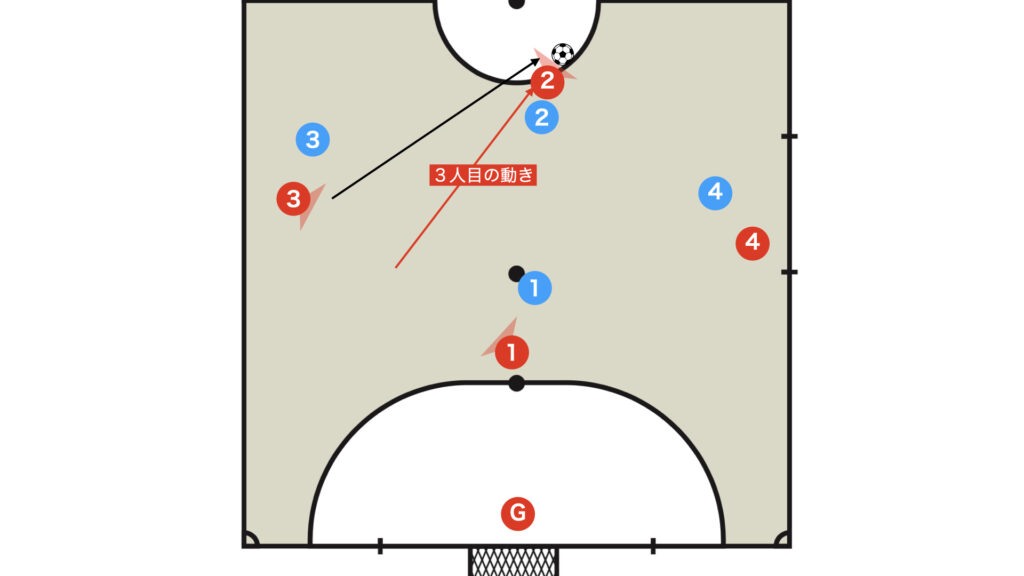
Red number 3 passes with a 2-touch run (preferably direct) to red number 2, who exploits the space behind.
Consequently, the red number 2 who executed the Sai becomes the movement of the third player.
Bait and Pisada
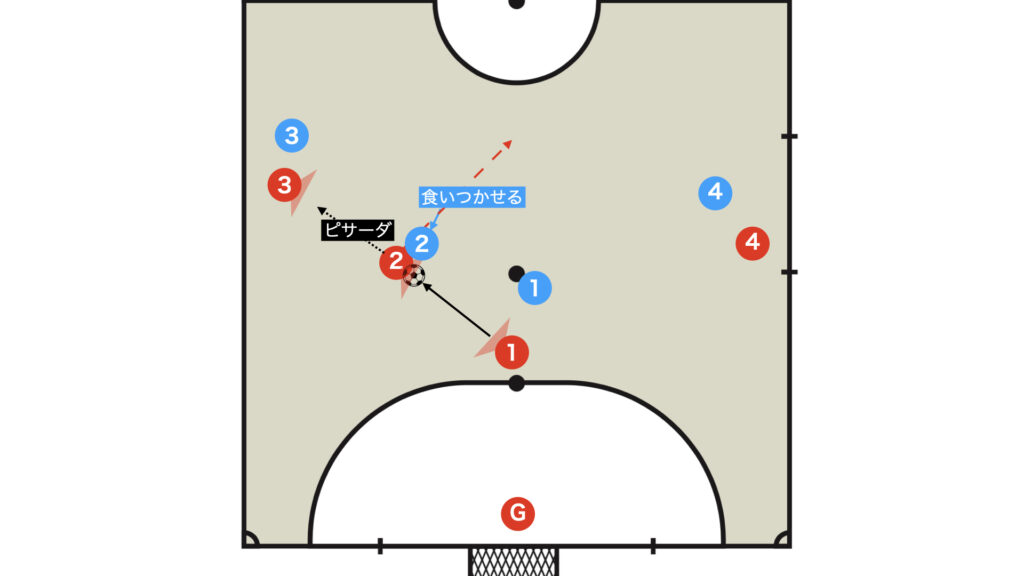
If you run without baiting the opponent, you won’t be able to exploit the space behind; therefore, intentionally trap once to lure the opponent in, and then break through with a pisada.
Through: Securing the Long Pass Lane
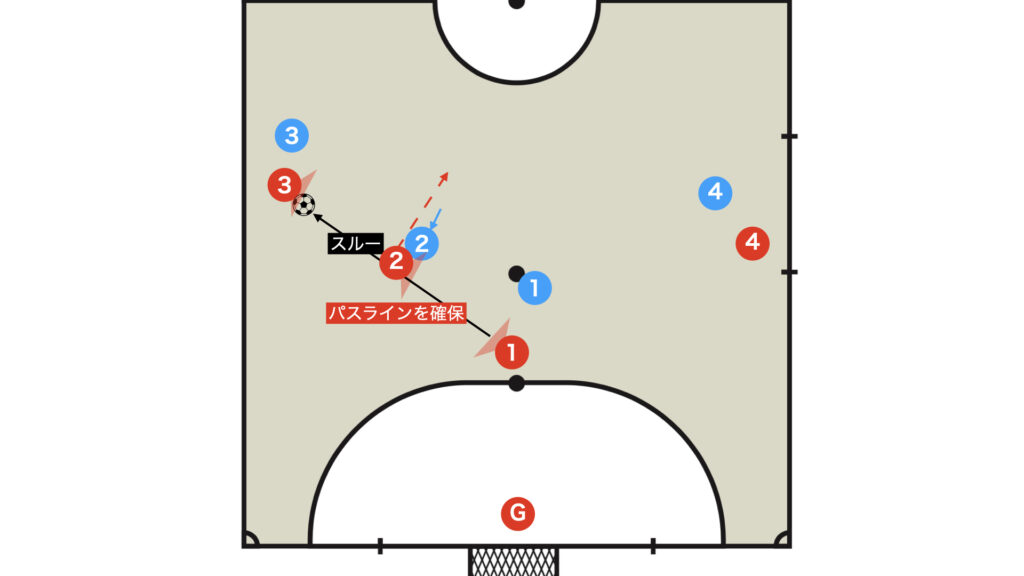
When the opposing DF (blue number 2) comes to intercept the ball, position your body to secure the passing lane, and then make your run after the ball passes near red number 2.
If necessary, use your body to block the opposing DF (blue number 2) from intercepting.
A fake trap to lure the opponent and then run through is also effective.
When the Opposing DF Follows: The Duo Relationship

If you make a run behind but the opposing DF follows, running through as is may leave red number 3 isolated.
(Unless you intentionally want to create isolation.)
In such cases, red number 2 provides horizontal support for red number 3, forming a duo.
Horizontal Support: The Lateral Duo
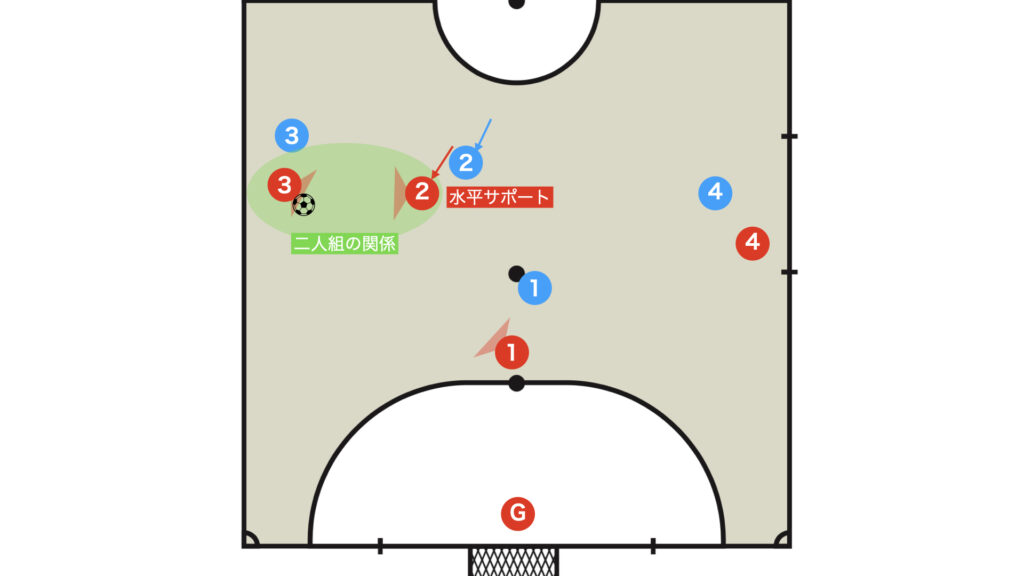
The methods to break down the duo relationship in this scenario remain the same as usual. For clarity, they are listed as follows:
- Backdoor, One-Two
- Paralela
- Diagonal
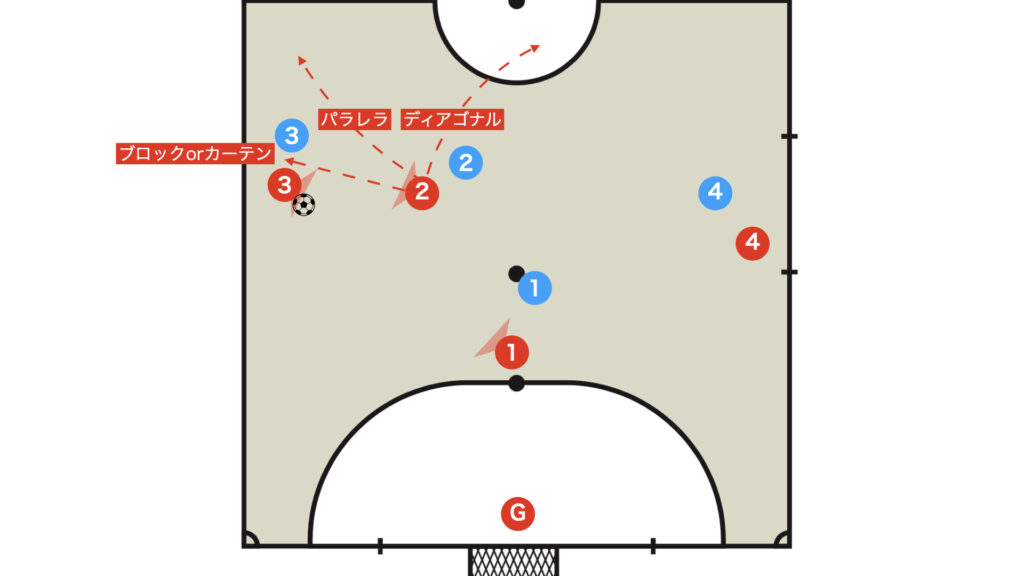
Although it may not strictly be considered a duo, individual tactics such as a contrapie can also be employed to break through.
Recovery of Floor Balance
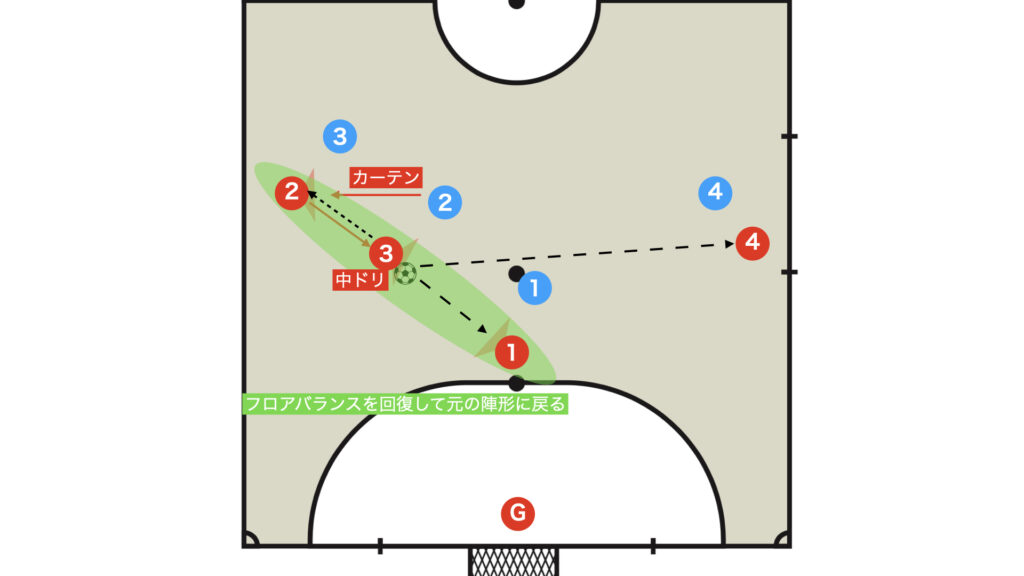
If the duo fails to break through, a slightly negative central dribble using a block or curtain can help restore the floor balance.
Utilizing Marker Switches and Backdoor (Double Run)
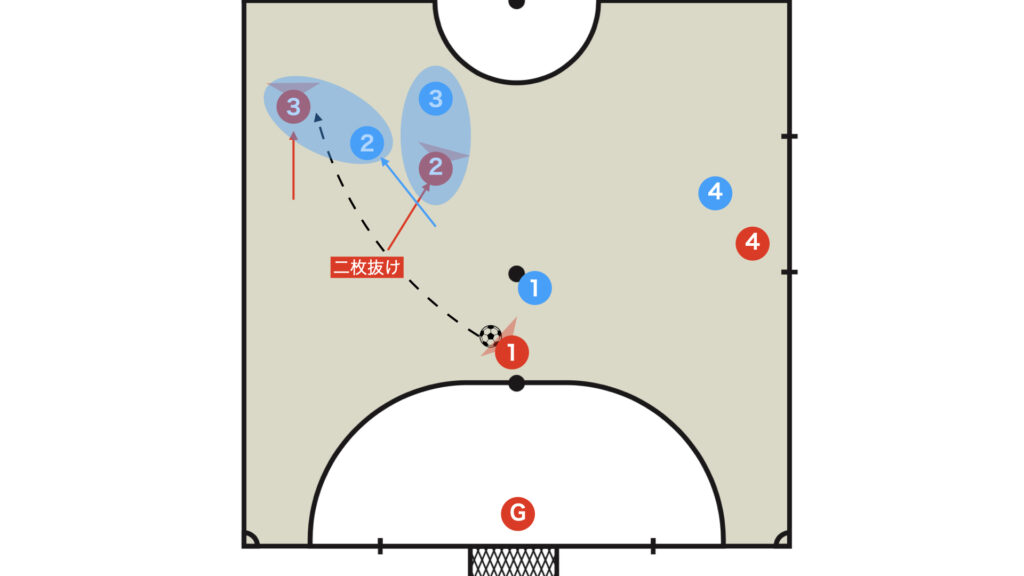
In defenses that maintain multiple lines against a 3 on line, red number 2 often counters an attempted breakthrough by employing a marker switch.
Taking advantage of this marker switch to simultaneously break through with two players—resulting in the backdoor run by red number 3 as shown in the figure—is highly effective.
Even if the player in the middle of the 3 on line cannot break through, if a marker switch is induced between the lines as shown in the video, the backdoor run will succeed.
Cross (Paralela & Diagonal)

When red number 2 makes a diagonal run and red number 3 makes a paralela run, their crossing movements confuse the opposing markers.
Summary
“3 on line” is a tactic adopted by many teams in futsal.
Rather than just knowing the form of the 3 on line, understanding its tactical intent and diverse variations will help you make the most of your next play.
Thank you very much for reading this article to the end.
If you found this article useful, please consider sharing it using the social media share buttons above.
We regularly share valuable insights on futsal tactics on Twitter, so if you haven’t followed us yet, we’d appreciate your support!
We are committed to raising the level of futsal in Japan by sharing high-quality information through discussions with individuals who have coaching experience in the F.League and overseas.
If you have any questions or notice any mistakes, feel free to leave a comment below.
We update our articles regularly, so if you’d like to keep reading, please bookmark our site or search for “FutTech”!
